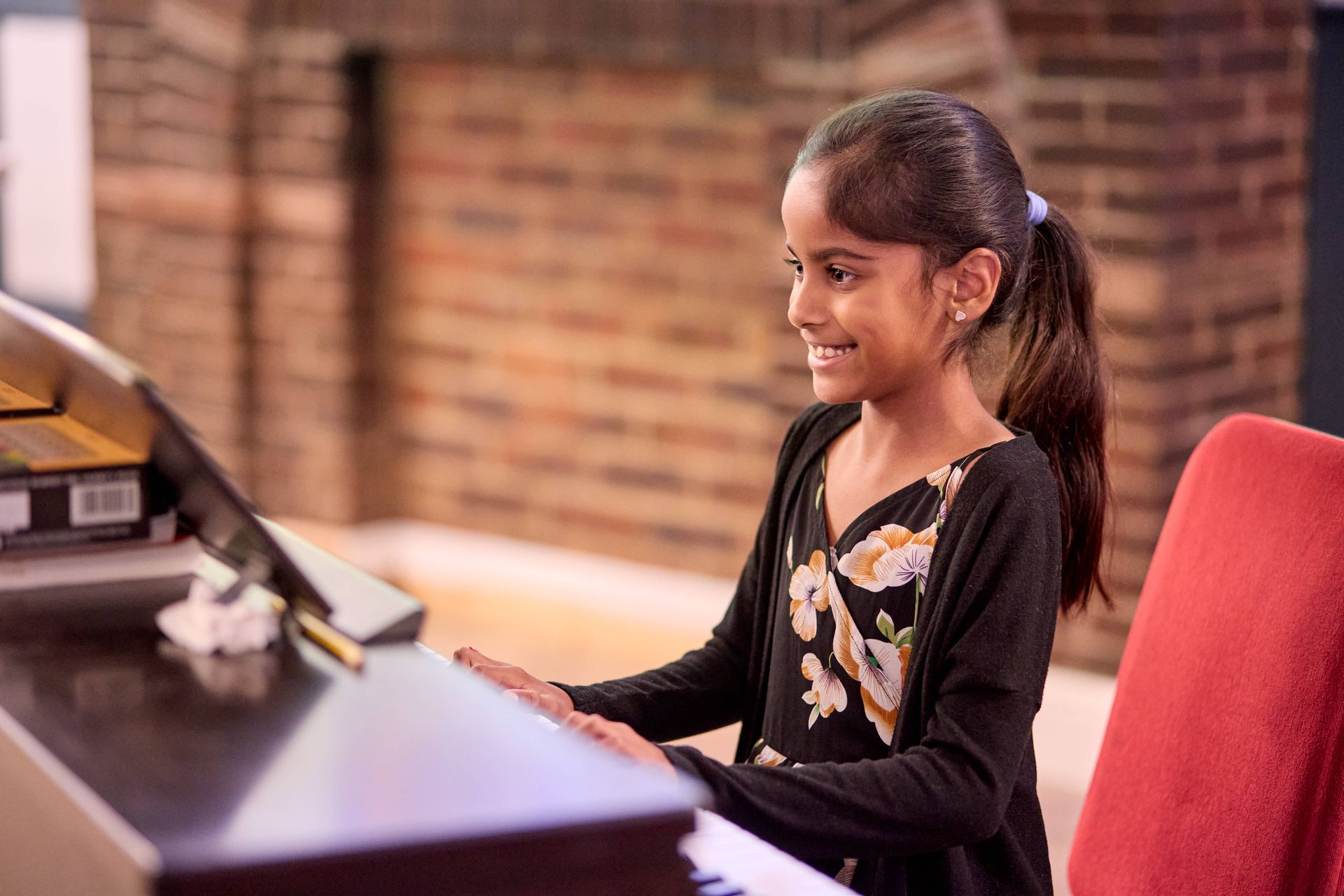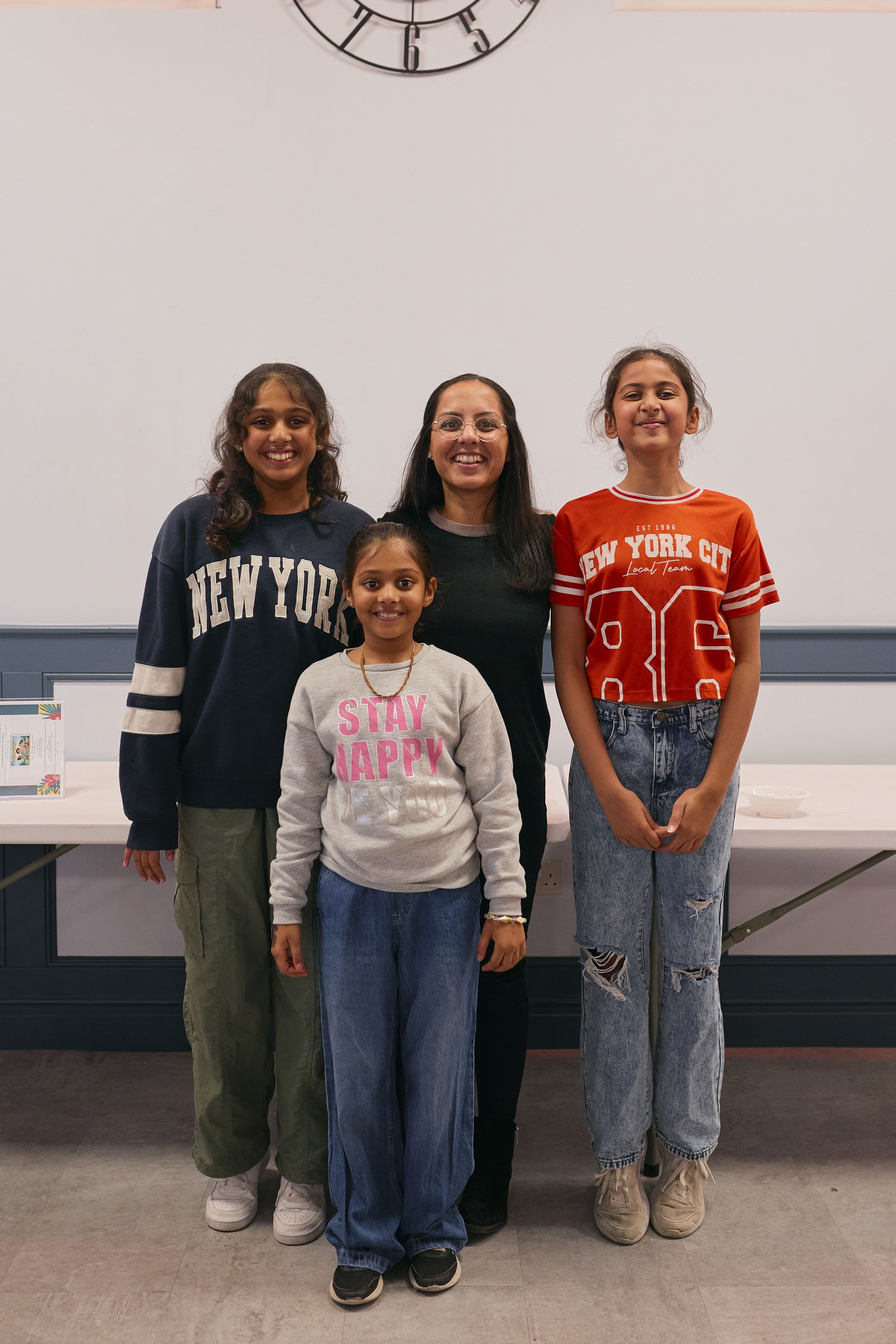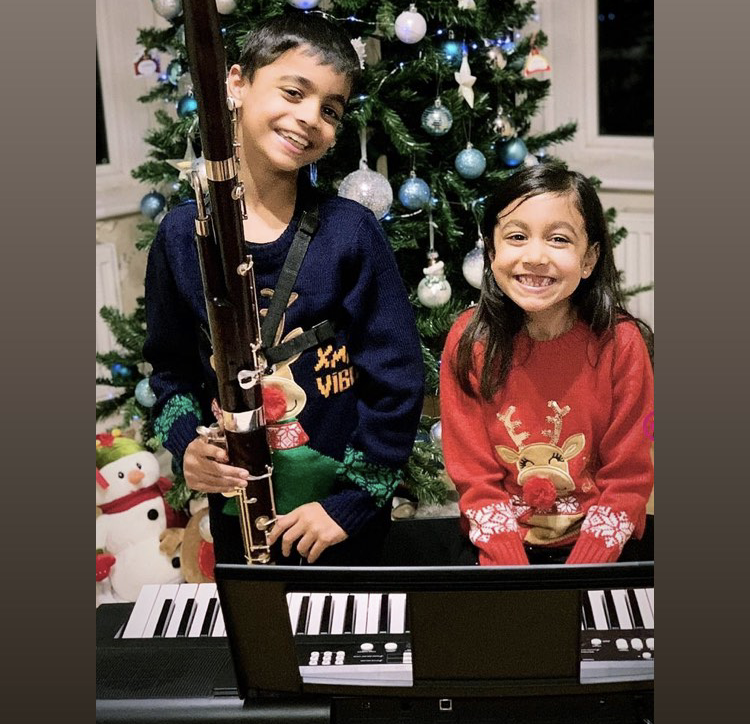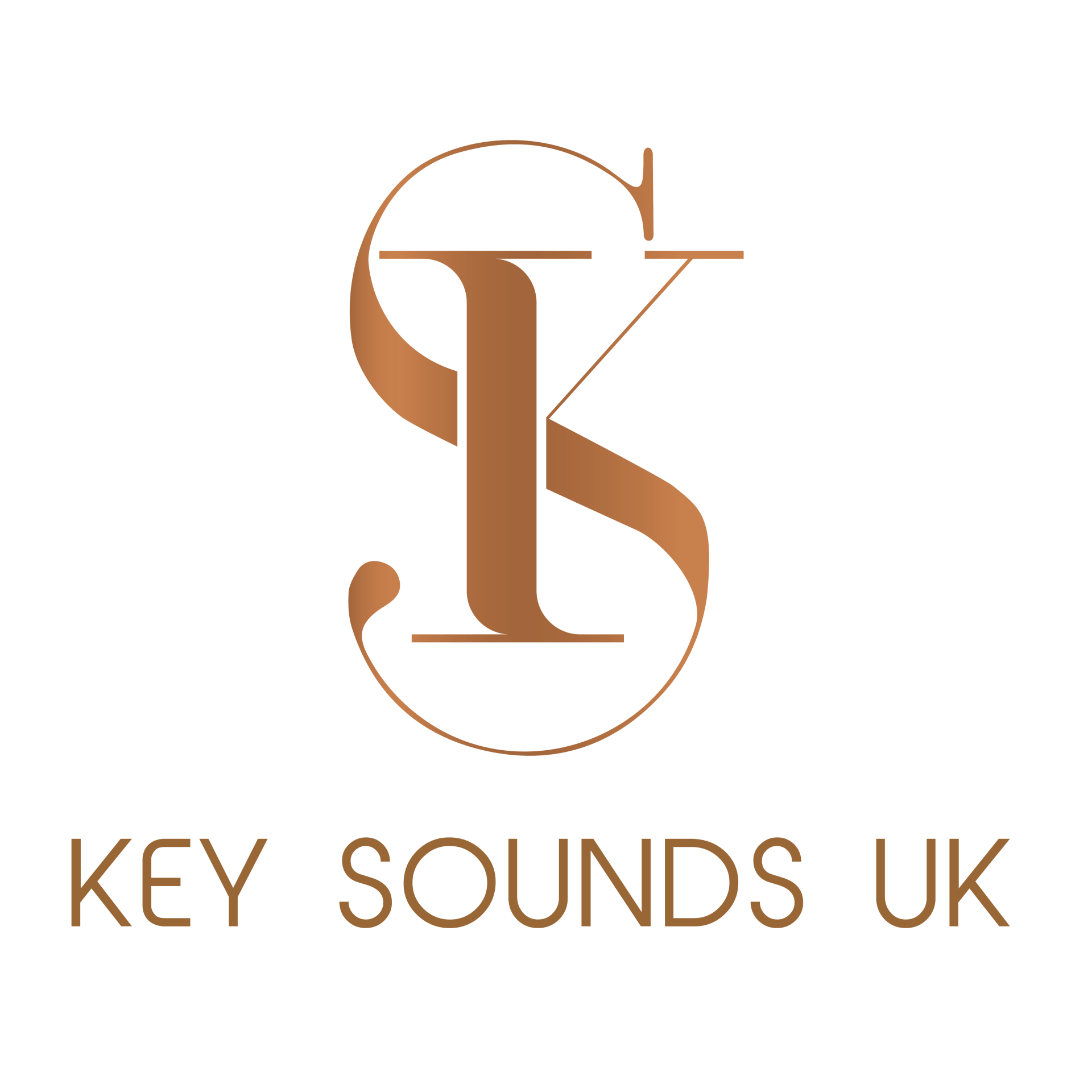Reshmi Patel • April 12, 2021
Playing versus Practicing the Piano
Often students who are new to the piano will do a mixture of ‘playing’ and ‘practicing' their piano.
What’s the real difference between these two? Should we always pick one or the other?
When we ‘play’ the piano this means we are playing through your songs and exercises from start to finish. This can be useful before a performance or at the start or end of your practice session. Solely ‘playing’ isn’t productive if you are looking to improve with your technique and to play the songs you love to a high standard.
When we ‘practice’ the piano this means we are actively choosing to play the difficult sections and musical elements. Some examples of these are: octave jump, moving from sharp to natural, trills, counts and rhythms. In the long run this is a productive way to practice your piano as you will grasp the techniques well enough to learn how to play the pieces you love at a faster rate!
Scenario
Monday, 8am-8:45am you are sitting at your piano and your lesson notes advise you to work on bar 3 and 4 dynamic changes. ‘Dynamics’ means volume. The volume changes in bars 3 and 4 are marked as quiet. This means we would press the keys lightly.
Example of Playing
8am-8:45am you play the song from start to finish. – at this stage of your journey this can work well to check off the box but a more productive way would be to practice in order to add in the volume changes and create interest within the piece.
Example of Practicing
8-8:45am you focus on playing bars 3 and 4 as quietly as you possibly can. You repeat this correctly 5-10 times in a row until this feels easy and natural. This would be a productive practice session and the piece is now on its way to sound like a performance.
Example of a combination of Playing and Practicing
8-8:30am you focus on playing bars 3 and 4 as quietly as you possibly can. You repeat this correctly 5-10 times in a row until this feels easy and natural.
8:30am-8:45am you play the song from start to finish and include the quieter section in bars 3 and 4.
This method works well if you have been able to practice the section you were struggling on within the given time frame. If not, keep on practicing until you have truly mastered the element you have been struggling on. Then try to play slightly more of the section or piece.
Remember that when you are trying out these hacks to look at them little and often but also be patient with yourself. If you wish to know more about these hacks and resources, feel free to take a look around our website or connect with us directly.
To find out more, feel free to get involved in our latest project “The Habits of the Top Performing Piano Players”, fill out our survey: https://bit.ly/2FDs8rf
For your chance to win a Nintendo DS Lite or a £50 Amazon Gift Voucher.


When your child is learning the piano, mistakes can feel frustrating - for both of you. But here’s the reassuring truth: mistakes are a natural and valuable part of learning. They show that your child is listening more carefully, paying attention, and trying to improve. Instead of viewing these little slip-ups as something to avoid, we can help children learn how to use them to become stronger musicians. Here are some gentle, encouraging ways to support your child when mistakes happen at the piano. 1. Remind Them That Mistakes Mean They’re Making Progress When a child starts to notice their own mistakes, it’s actually a sign of growth. They’re developing awareness and sensitivity - essential skills for becoming a confident pianist. Try reassuring them: “You noticed that - that means you're improving.” “Mistakes help us learn what to fix.” This shifts their mindset from frustration to curiosity. 2. Encourage Kindness Toward Themselves Children can be surprisingly tough on themselves. A tricky passage or repeated error can make them feel discouraged. A simple reminder goes a long way: “It’s okay. Learning takes time.” “Let’s take a breath and try again slowly.” When children feel safe to make mistakes, their confidence blossoms. 3. Show Them How to Turn Mistakes Into Something Creative A delightful part of learning the piano is discovering that mistakes don’t have to stop the music. If your child hits a wrong note, they can: Turn it into a little musical idea Repeat it as part of a rhythm Add a fun pattern or variation Teaching them to improvise through slip-ups helps them stay relaxed and playful - a skill that even advanced musicians rely on. 4. Focus on the Small Area That Needs Attention Instead of replaying the whole piece from the beginning, help your child zoom in on the exact spot where they keep slipping. A simple practice routine: Slow it right down Repeat the small section a 5 times in a row correctly Speed up only when the above has been completed This targeted practice builds confidence far faster than starting over each time. 5. Create a Little “Challenge List” Together Most kids love lists! Make a small note of the bars or patterns they find difficult. It turns frustration into a fun challenge to solve. Examples: “Left hand jump - bar 12” “Right-hand fingering in line 3” Look at the list for 2–3 minutes at the start of practice, then celebrate when they cross an item off. 6. Celebrate Every Win - Especially the Small Ones Did they fix one bar? Play a tricky rhythm correctly once? Make fewer mistakes than yesterday? Cheer for these! Progress is made in tiny steps, and when those steps are noticed, children naturally stay more motivated and positive. Finally, mistakes aren’t something to fear, they're stepping stones. When your child feels supported, encouraged, and free to experiment, they grow into resilient, confident learners. Your gentle reassurance helps them build not just piano skills, but lifelong problem-solving skills too. If you have any questions please feel free to reach out!

Every child learns piano for different reasons and their goals can (and should!) reflect who they are. Some children love structure. Some crave creativity. Some enjoy performing, while others prefer playing quietly for themselves. Understanding the different pathways available helps parents support their child more confidently and avoid unnecessary pressure. 1. Every Child’s Musical Journey Is Unique There isn’t a single “correct” goal for piano. Children can learn for: ● Fun ● Confidence ● Academic benefit ● Creativity ● Examinations ● Performance opportunities ● Emotional well-being Sometimes one goal leads into another and that’s part of the magic! 2. The Most Common Piano Goals (and How They Help) Creative Development Improvisation, composing, arranging popular songs Benefits: imagination, confidence, emotional expression Skill Building Technique, fluency, accuracy Benefits: discipline, brain development Performance Confidence School concerts, family recitals Benefits: public speaking confidence, resilience Exam Pathway (Optional) Grading Benefits: structured progression, sense of achievement Well-being and Relaxation Playing for joy and calm Benefits: mental balance, stress relief Actionable Tip One Ask your child: “What do you enjoy most about the piano?” Their answer often reveals what their goals naturally should be. If you’d like help identifying what motivates your child, feel free to message us - we can offer insight based on how they learn in lessons. 3. Choosing the Right Goal for Your Child’s Age and Personality Here are some ideas but please note these are not fixed as it does depend on the personality, strengths and goals of your child. Ages 5–7: Short wins, fun pieces, confidence-building Ages 8–11: Structure, pieces they recognise, balanced challenge Ages 11–14: Identity, creative choice, performance opportunities Teens: Style exploration, exam strategy, personal expression Actionable Tip Two Create a simple “one-term goal” together: Examples: ● “Learn two pieces I love” ● “Perform at the next school concert” ● “Take my Grade 1 when I feel ready” ● “Compose a short melody” One achievable goal can dramatically boost motivation. 4. Goals Can Change (And That’s Healthy!) Children go through phases - more academic pressure, emotional changes, shifting interests. Their piano goals should evolve with them. This is why regular communication with your teacher is so important. If you’re unsure what goals suit your child best - or you’d like help setting motivating, realistic targets - you’re welcome to message us anytime. We love helping parents understand what’s right for their child.

Christmas is a time for family, fun, and a much-needed pause from rigid routines. If your child learns the piano, you might be wondering how to keep music ticking along without it feeling like yet another thing to manage during an already busy season. The good news? Piano progress doesn’t stop just because formal practice looks different. Small, intentional musical moments can go a long way especially for children aged 6–8. Here are three simple, low-pressure ways to support your child’s piano learning over Christmas. 1. Reframe “Practice” as “Play” One small word change can make a big difference. Instead of saying “Go and practise the piano”, try: “Can you play me something on the piano?” “What would you like to play today?” “Can you show me your favourite part?” Why this helps: Children associate play with freedom and enjoyment It removes the pressure of “doing it right” It encourages curiosity rather than resistance Ask your child to play one thing only - even if it’s just 30 seconds. A tiny win keeps confidence high and avoids overwhelm. 2. Use Everyday Listening to Spark Musical Interest You don’t need to be musical to support your child’s ear for music. Listening to piano-based music in the car, while cooking, or during downtime helps children absorb rhythm, mood, and musical patterns naturally. Try: Film soundtracks with piano Calm pop songs featuring piano Instrumental background music during quiet time How to make this interactive (without a lesson): “Does this sound happy or calm?” “Is the piano playing loudly or softly here?” “Would this be fast or slow to play?” These simple questions build musical awareness without sitting at the piano at all. 3. Turn Music Theory Into a Game Theory doesn’t need to feel formal - especially at Christmas. Short, playful theory moments can actually strengthen understanding and help your child feel more confident when they return to lessons. Easy ideas: Flashcards at the breakfast table A 2-minute quiz before bed “How fast can you name these notes?” challenges Keep it light: No correcting every mistake Celebrate effort over accuracy Stop while it’s still fun Set a timer for 2–5 minutes only. Ending early keeps children keen rather than tired. A Final Thought for Parents If the piano looks different over Christmas, that’s completely okay. What matters most is that: Your child feels positive about music The piano remains a friendly, familiar space Learning continues in small, manageable ways These gentle approaches help children return to lessons feeling confident not behind. If you ever want ideas tailored to your child’s age or level, we’re always happy to help support. Please feel free to reach out if you have any questions!
